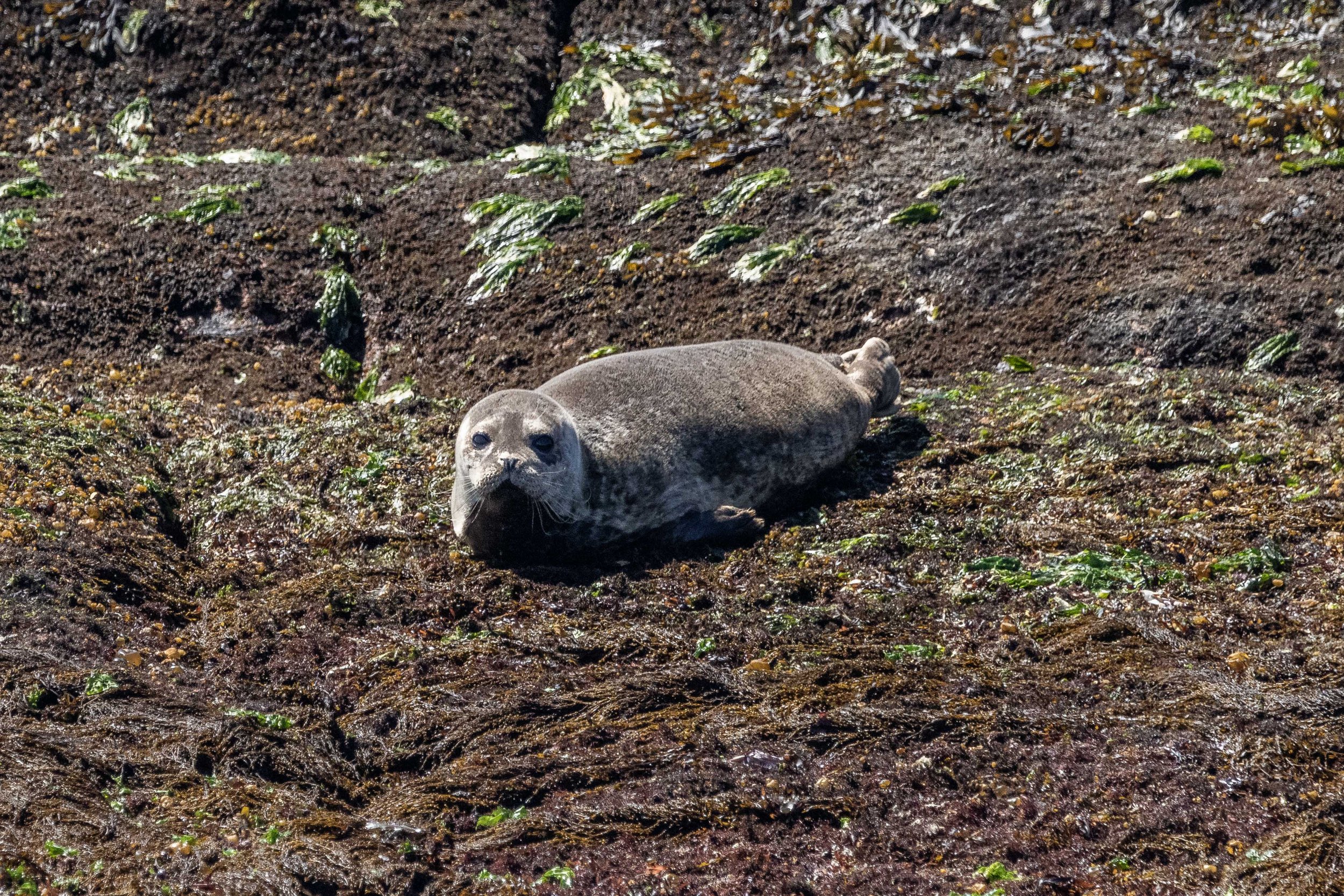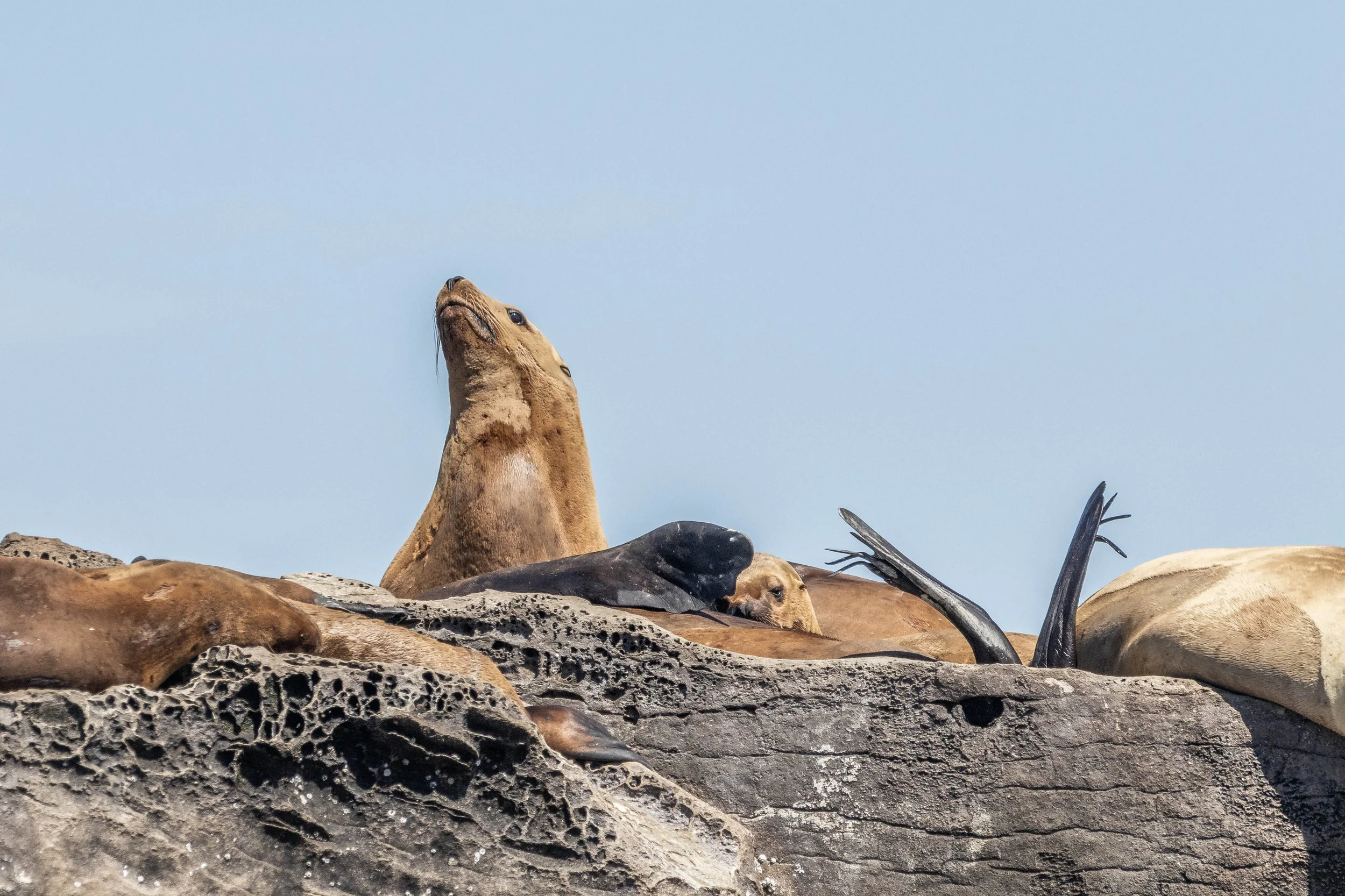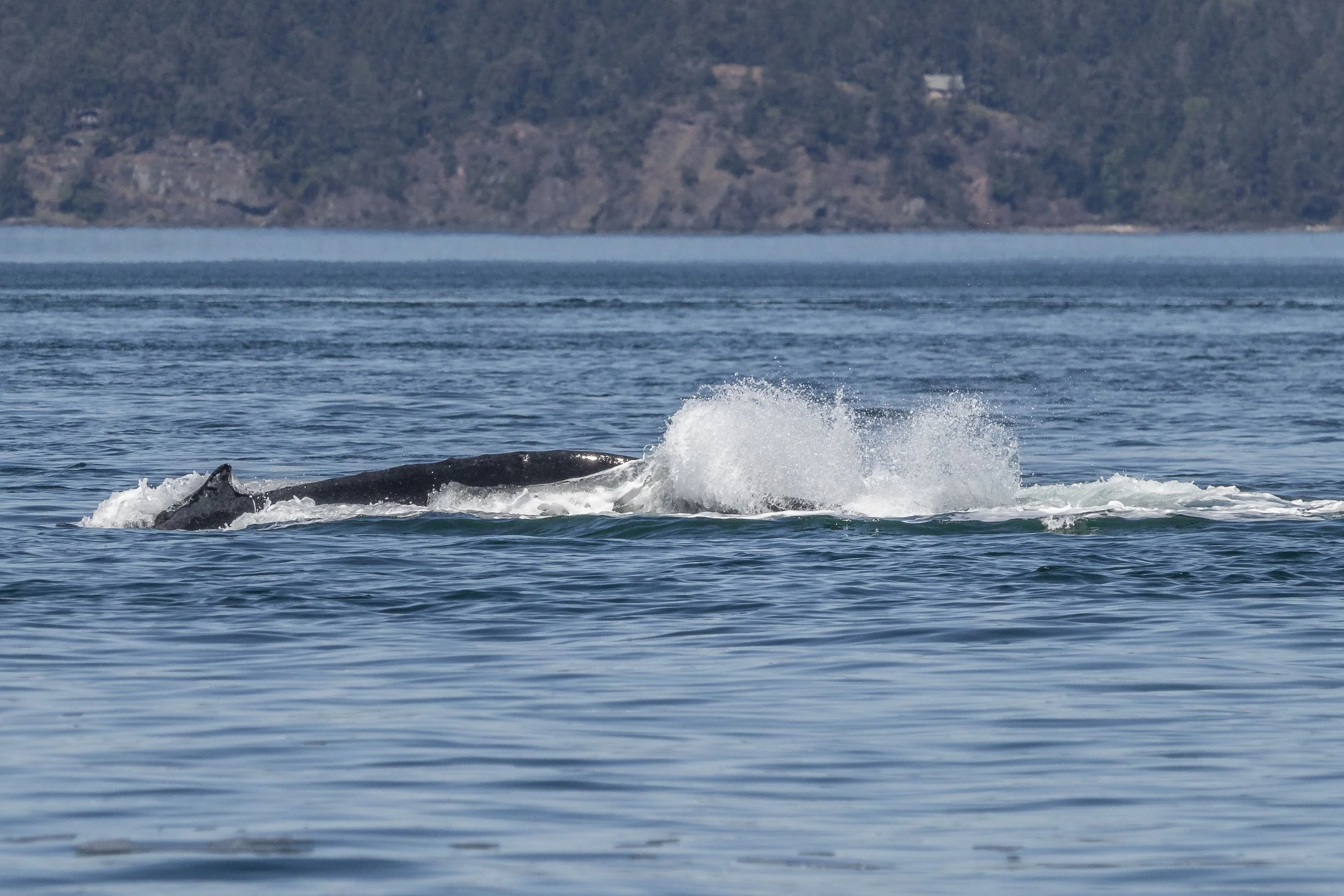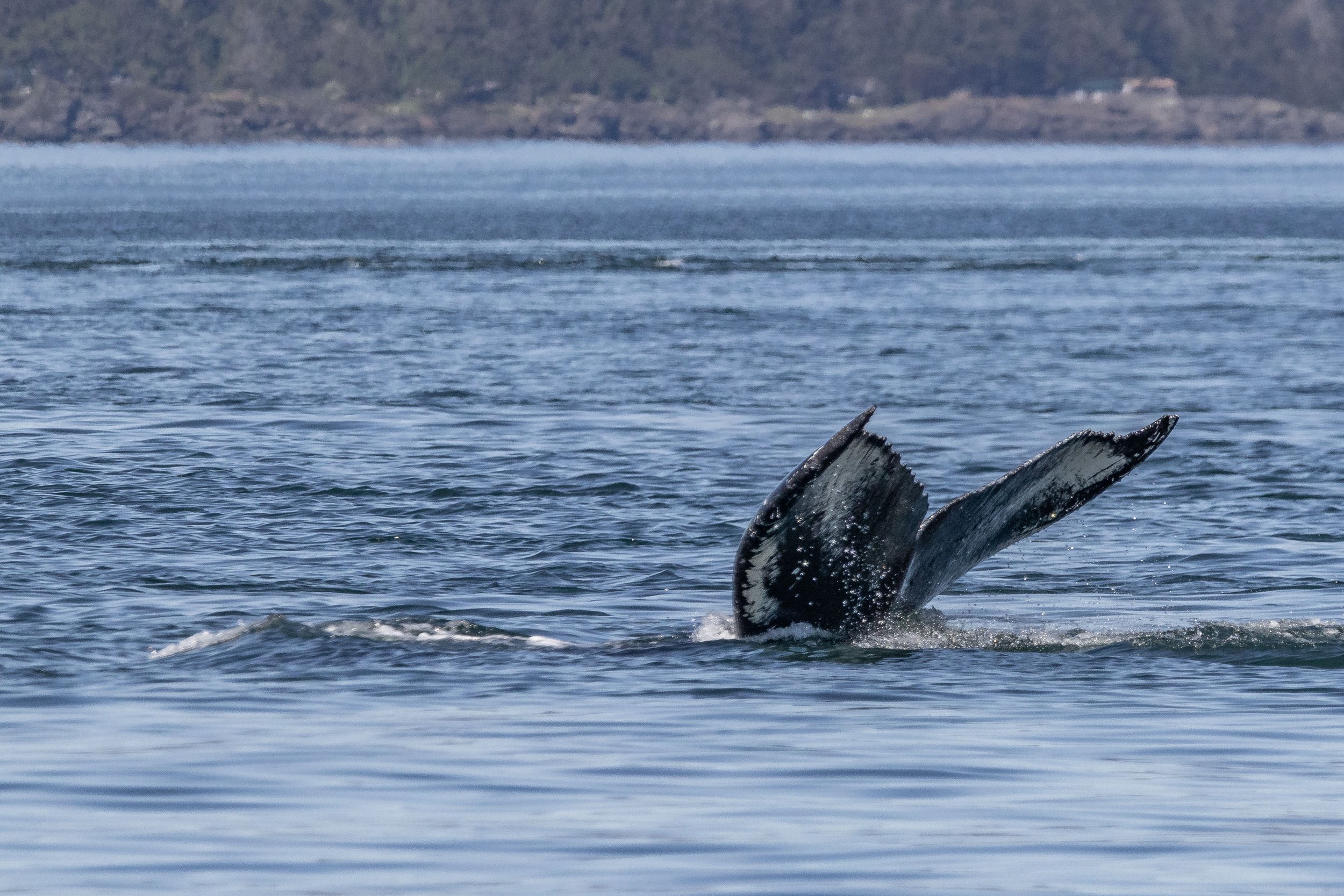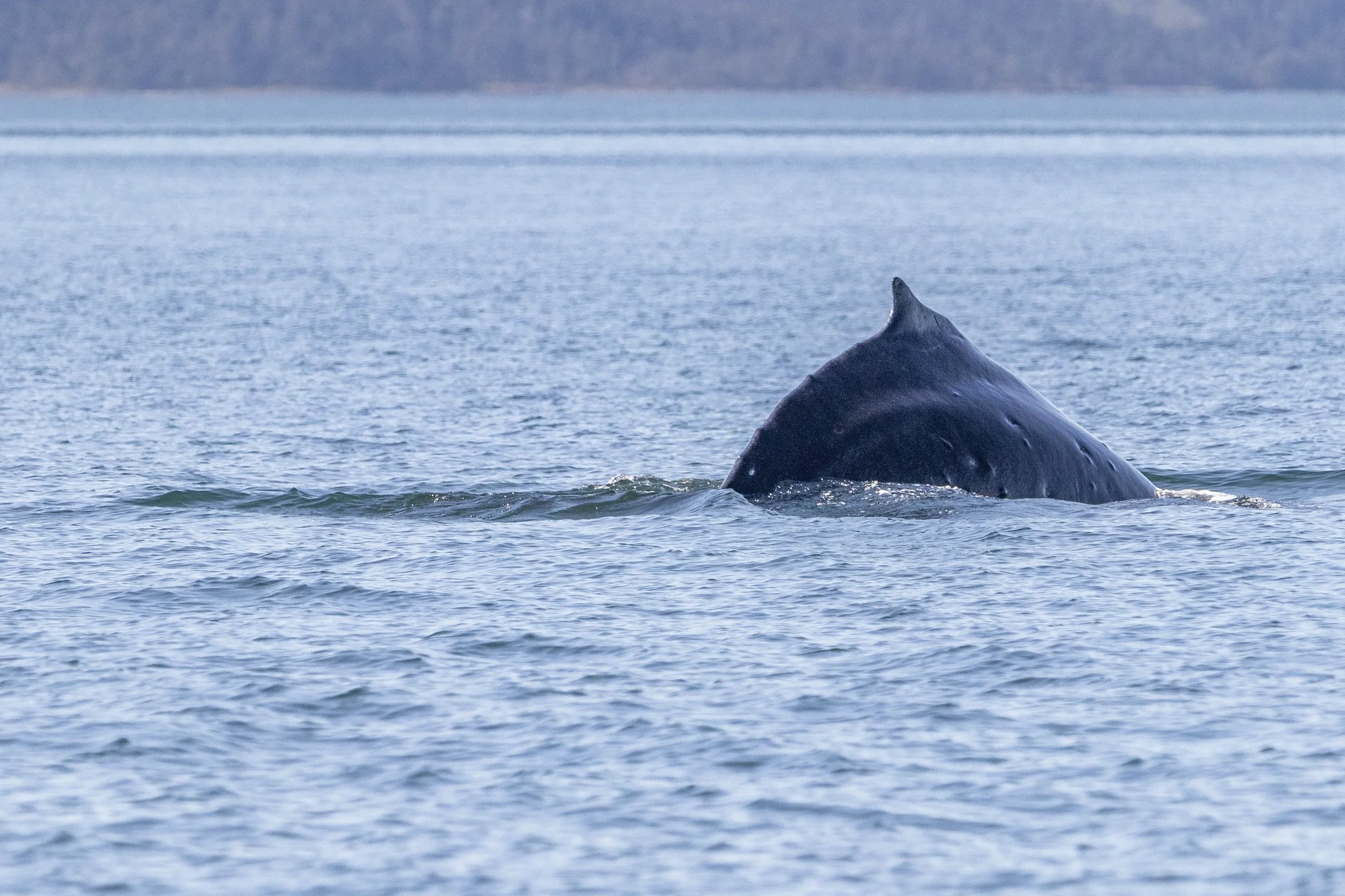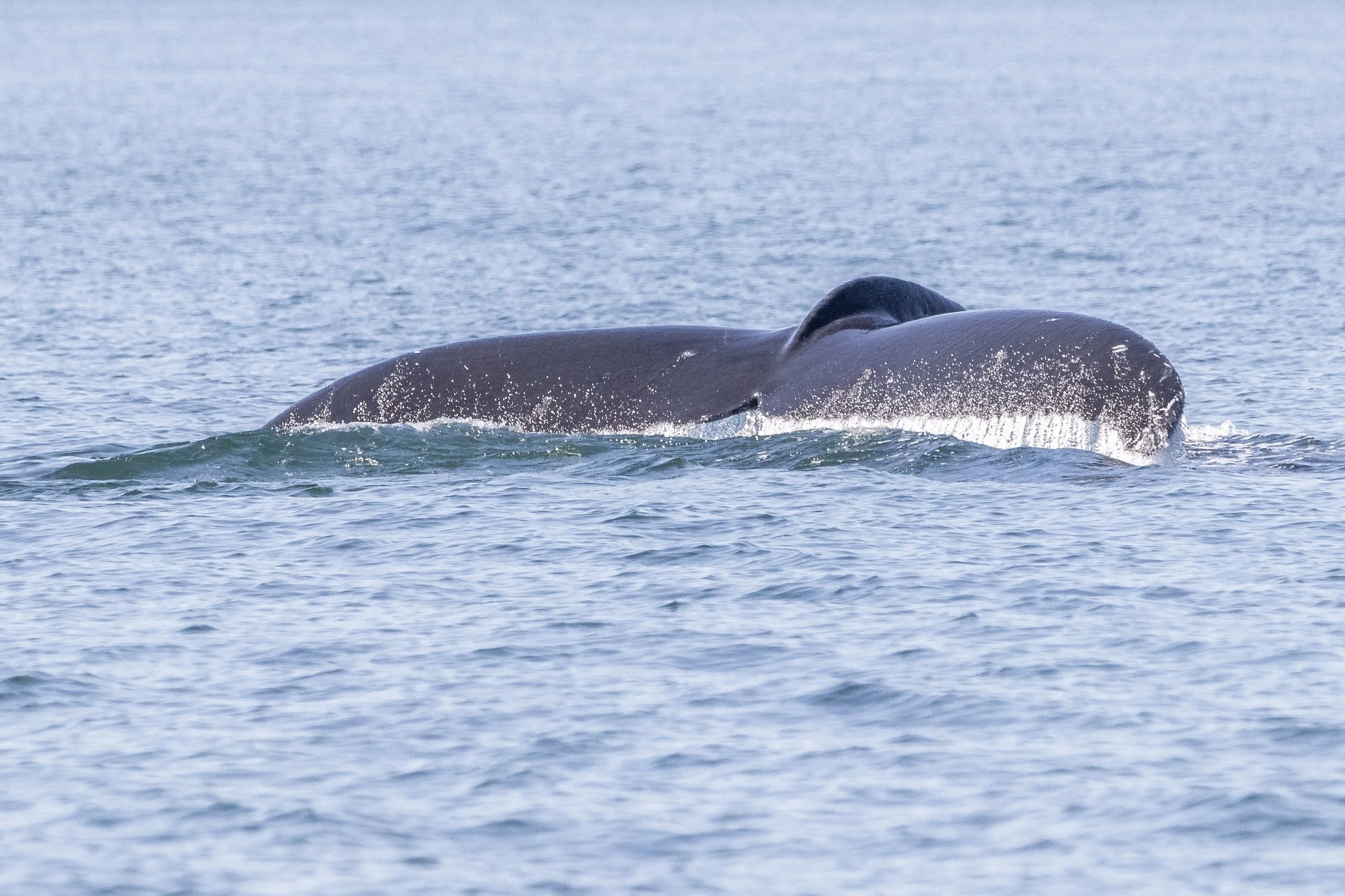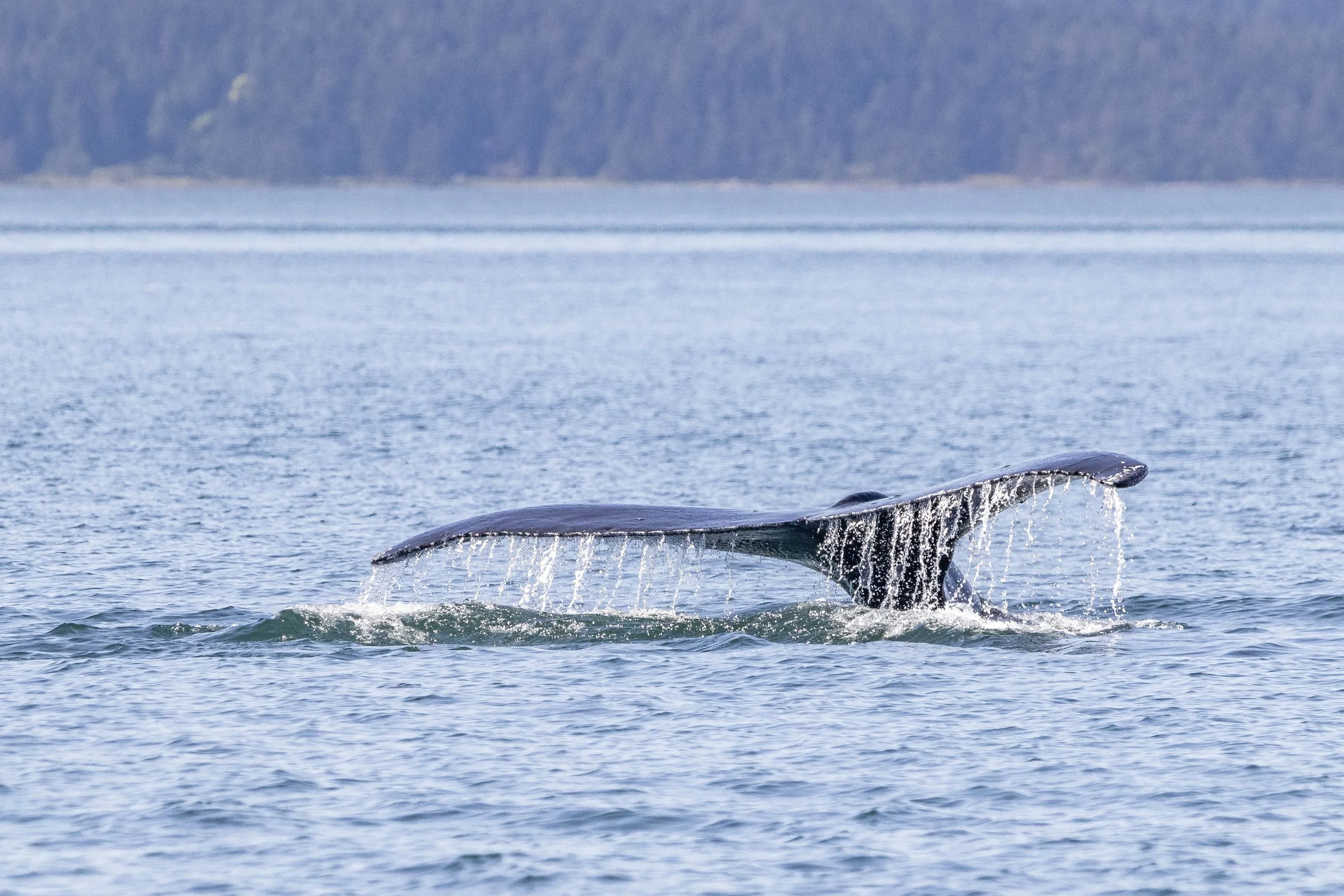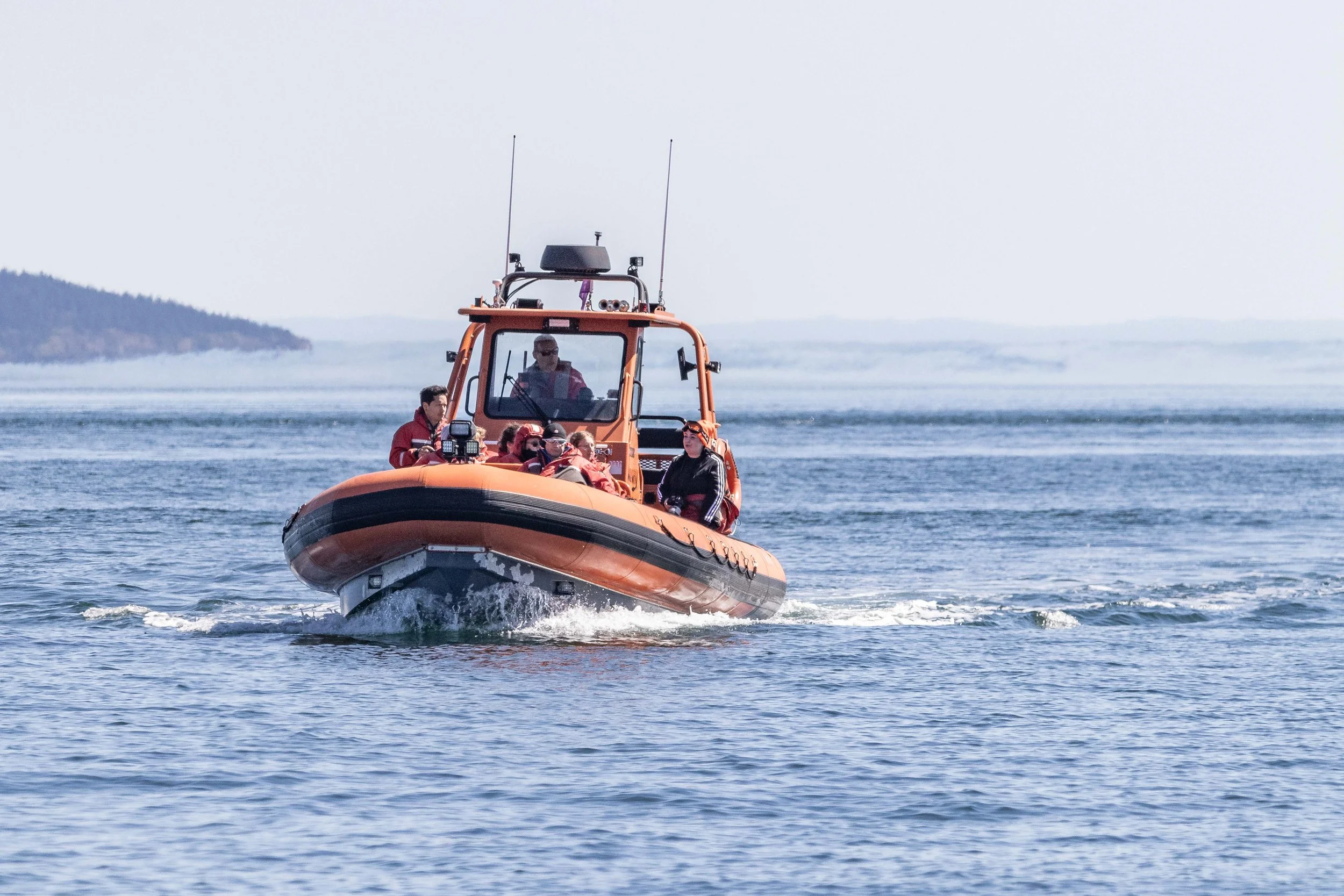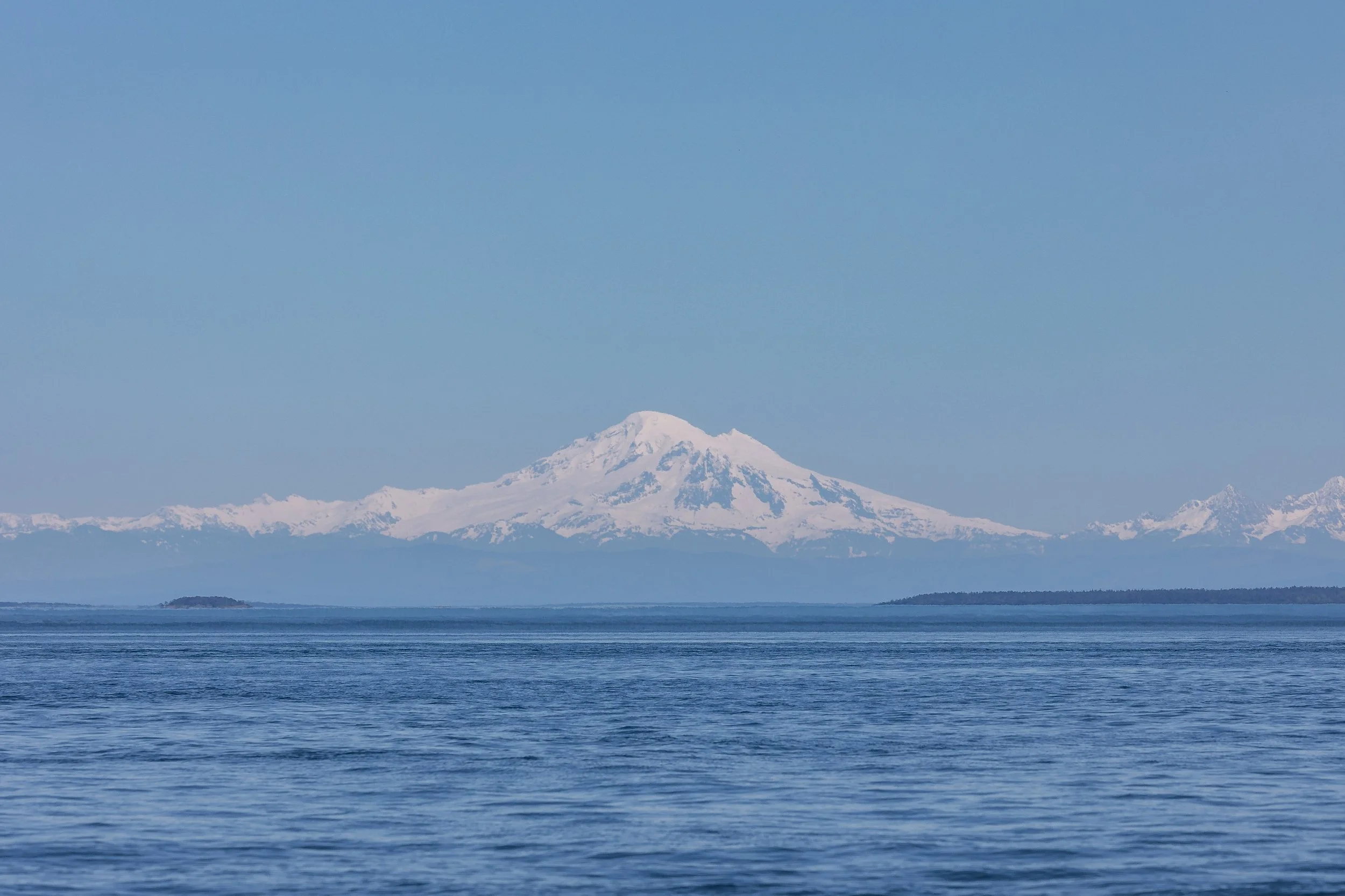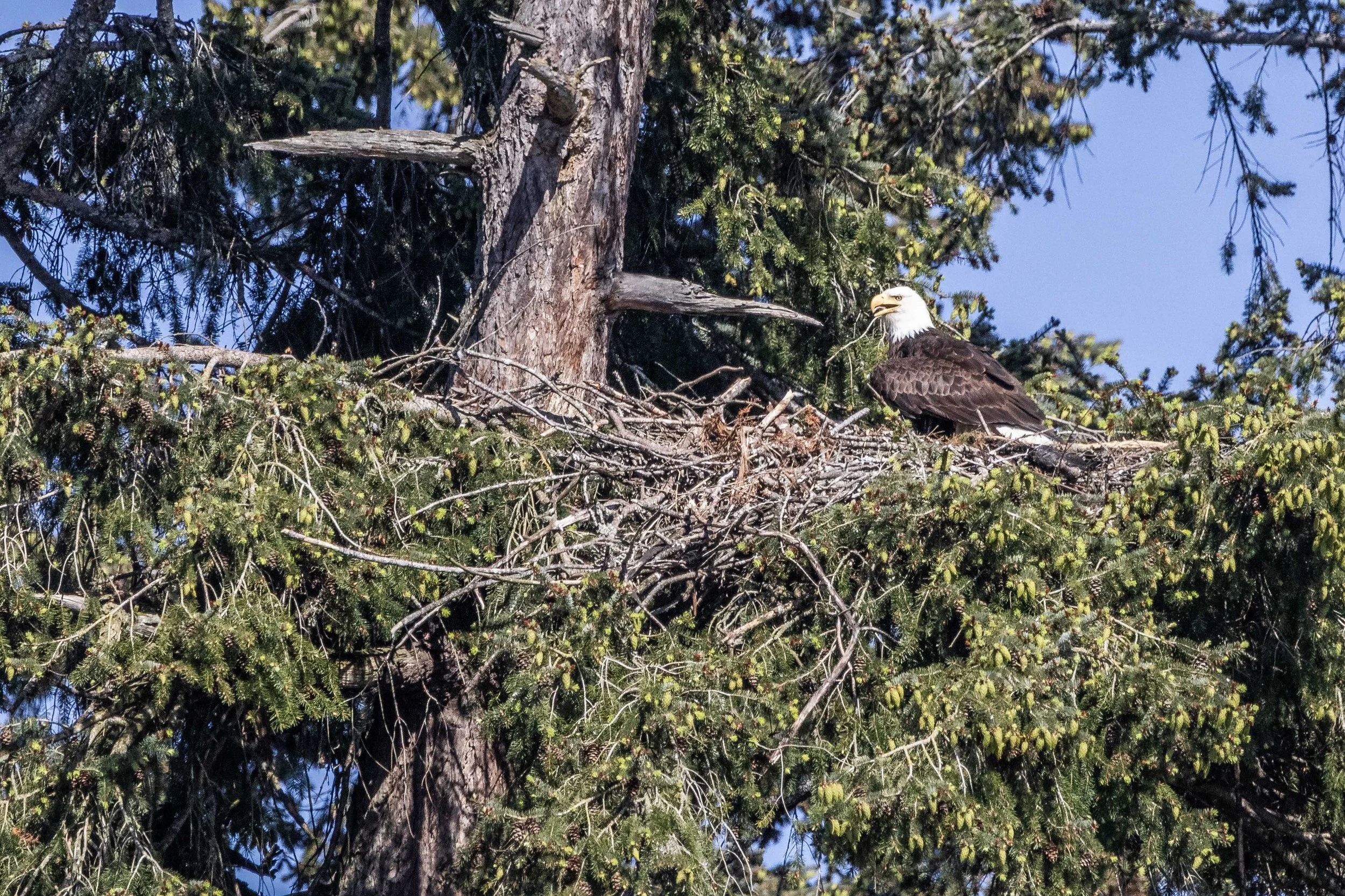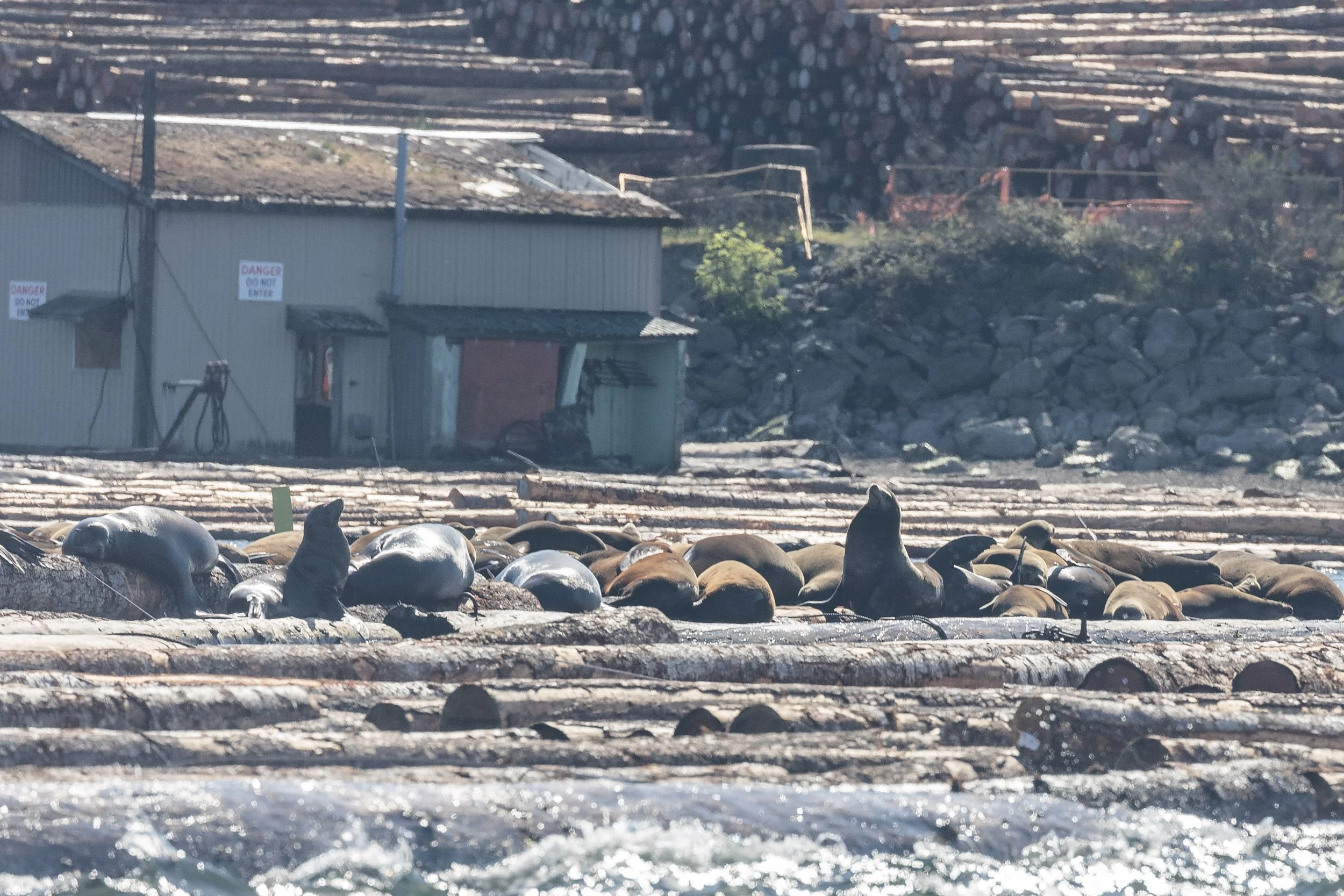May 9, 2024 - Humpback whale Bagheera in Haro Strait
It was another great day on Vancouver Island; the sun was shining bright and it’s finally starting to feel like summer is just around the corner! Today, we decided to head south into the Gulf Islands, where the scenery is unmatched! We love this route because there is so much to see even when spotting our whales takes a while, like it did today. None of our whales are chipped or tagged so we find them every day just by sight. Well, today our whale decided to pop up very south into our range, we spotted our blow in Haro Strait near the San Juan Islands, and we had to cross over into U.S. waters!
It was a humpback whale that was spotted in the north end of Haro Strait, and lucky for us they were being very generous with showing off their tail! We quickly IDed this whale as Bagheera (KEY0042), the 2021 calf of Graze (BCY0523)! Bagheera seemed like they were feeding in the area, doing sporadic surfaces and spending time under the surface where their main food sources would be. Humpbacks are after really tiny things, despite being one of the larger whales in the area. They are Baleen whales, capturing huge volumes of in their mouths before using the baleen to filter the food our of the water. Each mouthful that an adult humpback takes is about the equvilant of filling the average bathtub up 180 times, or about 20,000L of water. What they are hoping gets stuck in their teeth, so to say, is small schooling fish and/or krill and other larger plankton.
While most of this happens under the water so it can be hard to tell what they are actually eating, there are ways to figure it out. One of the most common ways of determining prey species is by looking at the whales poop. These fecal samples are collected from the surface of the water, usually as the whale is diving. They can get in after the whale has moved and scoop it up, analysing what is left in the poop. Things like the hard exoskeletons of the plankton might be left undigested, as well as the bones from the small fish. Looking at the composition of these samples there is usually a regional pattern to the type of prey that the humpbacks are after, which makes sense. They stick around in area of high productivity and in places where there are lots of their food to make their feeding more efficient. Since the different prey usually have different optimal conditions, it makes sense for their diet to be composed mostly of one or another at a given time of sampling.
Today we also got to see a unique behaviour from Bagheera, as each time they surfaced, they did a little “swish” with their tail. Now we don’t know for sure, but this could be part of their feeding process. Sometimes the whales will push the water around to stir up and concentrate the food that they are after, helping them be even more efficient in their feeding. We don’t know if this is what was happening today, it could have just been a bit of playful activity from this young whale, but we will never really know.
After spending time with Bagheera, we left them to their flicking and diving, and we started the long journey home. Lucky for us, it wasn't just the humpback that we saw today, as we also got to see both Harbour Seals and Steller Sea Lions on the search before finding the whale, and did a quick look at the California Sea Lions at Harmac before returning to harbour.
It was a long tour, but worth it to see all of the amazing wildlife we did! Our onboard naturalists Hayleigh Hilbert and Lucy Willis got some amazing photos of the wildlife today, all of which can be viewed below!
Some very round Harbour seals. Photo by Lucy Willis.
Can you spot the purple sea stars? Photo by Lucy Willis.
A big stretch from a Harbour seal! Photo by Lucy Willis.
A rock potato, better known as a Harbour seal! Photo by Lucy Willis.
A Steller sea lion, can you spot the poo? Photo by Lucy Willis.
A cuddle puddle of Stellers. Photo by Lucy Willis.
Always yelling about something! Photo by Lucy Willis.
Flippers up! Photo by Lucy Willis.
Bagheera. Photo Hayleigh Heilbert.
Bagheera fluking! Photo Hayleigh Heilbert.
Photo Hayleigh Heilbert.
Bagheera swishing that tail! Photo by Lucy Willis.
Making waves! Photo by Lucy Willis.
The underside of Bagheera’s tail. Photo by Lucy Willis.
Bagheera diving. Photo by Lucy Willis.
Getting ready to fluke! Photo by Lucy Willis.
Waterfall! Photo by Lucy Willis.
Our open vessel Keta. Photo by Lucy Willis.
Mount Baker in Sumas Washington. Photo Hayleigh Heilbert.
One of our Eagle parents at the nest. Photo by Lucy Willis.
A Cormorant with nesting material. Photo by Lucy Willis.
California sea lions soaking up the sun! Photo Hayleigh Heilbert.




